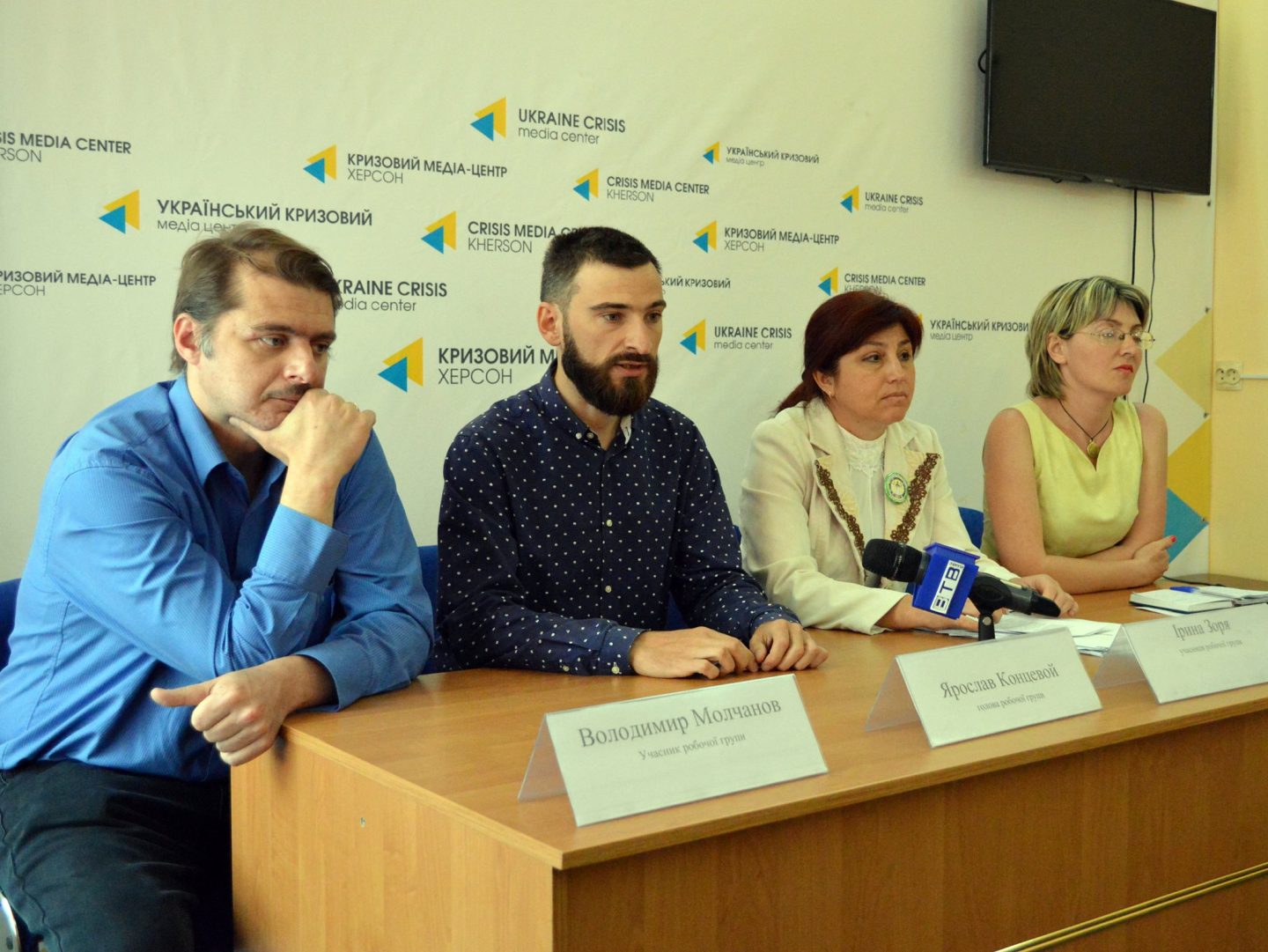Kherson, May 5, 2017. In Kherson the public spoke out against the populism of local government and carriers regarding the formation of public transport tariffs. A working group established after the public hearings on tariffs for public transport has been operating for several months already. It includes representatives of the public, carriers and the City Transport Department. However, they were not able to calculate economically reasonable bus fares for a number of reasons. Representatives of the working group reported on the situation at a press conference held at Media Crisis Center. Kherson.
Since February 2017, representatives of local authorities have been declaring the need to raise the public transport tariff from 3 to 5 hryvnias. It should be noted that they do not speak about economically justified rates; instead they say that “everything has become more expensive and this must become more expensive, otherwise drivers cannot earn anything.” In contrast to populist declarations justifying almost doubling prices, members of the public insisted on creating a working group to monitor the establishment of economically justified rates.
According to the head of the working group Yaroslav Kontsevyi, close cooperation with carriers failed. They developed a memorandum with three main points: improving the quality of transport, improvement of legislation, public control. But only one carrier, “Cornet-style”, submitted proposals to the Memorandum.
“Unfortunately, collaboration failed because of opposition. The decision on the tariff is not the competence of the group. Due to lack of necessary data, we could not calculate the tariff,” stated Yaroslav Kontsevyi.
Iryna Zoria, group member, provided more details of the issue.
“At the first meeting the working group requested the carriers to provide all the necessary calculations. During the week only ‘Rempobuttekhnika’ and ‘Cornet-style’ provided their calculations. However, these calculations raise many questions,” commented Iryna Zorya.
In August, “Rempobuttekhnika” provided one calculation, and in January – quite another. It was lower than in August. Besides, the working group members have questions about the application of the tariff formula as there is neither profit performance nor the single passenger count.
“In 2013, the public was actively involved in calculating the passenger traffic. A working group headed by Yuri Pekelys was created. In 2017, the passenger traffic decreased considerably. The study conducted by the Kherson National Technical University reveals the third figure of passenger traffic. This figure is in the denominator in the tariff formula. The smaller it is, the higher will be the tariff,” informed Iryna Zoria.
The tax office refused to provide more information or statistics to the working group members, arguing that such information is confidential.
“We concluded that we should not do it. Today we cannot speak about the economic feasibility of the tariff,” summed up the working group member.
The public also has questions to the City Transport Department that is missing the position of an economist for some reason. It is unclear where the tariff of UAH 5 came from.
Iryna Zoria informed that the working group recommends the carriers to focus on other things rather than on increasing the tariff. Firstly, they should focus on the night traffic, where they can raise the price (Kherson residents agree to pay even 10 hryvnias to get a ride at night). Secondly, they should introduce the regular traffic of buses, and then the tariff for public taxi buses can be raised. So, people will have the option – to go by bus will be cheaper, by taxi – more expensive. Thirdly, the carriers can raise the issue of compensation for transporting commissionary passengers because now they are doing this for free.
Video recording of the round table can be found here.



